Exposition
Sauvage/ Wild exhibition
Exposition Sauvage est une exposition d'image sur la thématique
des outils inspires par une vieille définition de l'Encylopaedia
Universalis.
Lors de votre visite, vous pourrez
découvrir un peu comme l'ont découvert les passants et les
curieux des rues Parisiennes, les douze images et extraits de cette définition
qui constitue Exposition Sauvage.
Le principe d'Exposition Sauvage
est d'être une exposition sans limite, sans lieu d'exposition, cent
lieux d'exposition mais aussi sans support ou multi-supports.
Elle se présente sous la
forme de cartes imprimées, sous la forme de séquences animées
sur un CD-Rom, sous la forme luminescente de ce site et enfin sous la
forme d'un fichier JPG que l'on peut télécharger et imprimer
sur ce site.
En effet si vous le désirez,
ce site vous permet de réaliser des cartes postales. Libre à
vous de les exposer ou les adresser à la personne de votre choix.
Ainsi, vous poursuivrez le principe d'Exposition Sauvage : être
une exposition libre et aléatoire.
Pour en savoir plus sur cette expérience,
vous pouvez acquérir le CD-Rom Exposition Sauvage en vente sur
ce site.
Bonne visite
Exposition
Sauvage
Cet avant-propos n'est pas l'échafaudage
d'un principe théorique, mais l’explication de mon cheminement
afin de vous présenter, par souci de simplicité et non de
simplification tous les aspects d’Exposition Sauvage.
La démocratisation des ordinateurs personnels est une mutation
sociale incontestable et parfois incontournable. Il en est de même
pour les artistes, souvent considèrés en marge du système
social.
C'est dans cet esprit de curiosité bienveillante et de pression
indicible, que j'ai donc acheté un ordinateur, complètant
ainsi la gamme variée de mes outils acquis au fil du temps.
Je l'avais dèjà nommé " outil de travail ",
puisque le monde l'avait dèsigné ainsi et lui avais fait
une place dans mon atelier et m'apprètais à l'utiliser.
La complexité technique de mon ordinateur, son potentiel varié,
et sa gestion immatérielle des informations a troublé l'artisan
constructeur que je suis. Face à ces difficultÈs, j’ouvris
mon Encyclopædia Universalis, une édition un peu vieillotte
de 1976 et lus la définition de l'outil.
A ma première lecture, je fus troublé par l'aspect poètique
du texte, chaque mot résonnait comme une invitation à la
dècouverte d'autres définitions. Puis, un flot d'images,
d’événements quotidiens vint se télescoper
involontairement comme pour vérifier la justesse des idées
développées par cette définition des outils.
Aux lectures suivantes, une idée forte s'imposa : l'utilisation
de l’outil dépend de son utilisateur. Si l'outil est un moyen
de transformer la nature, comme le suggèrait la définition,
il fallait décider de son orientation. Il en était de même
pour moi.
Lentement et laborieusement, j’explorais les facettes multiples
et variées de mon ordinateur, et comme le dit la définition
de mon encyclopédie la maniêre machiniste ajoutait à
l'aliénation du travail celle du savoir.Finalement, je découvris
que j'utilisais les mêmes outils qu'auparavant tels que : la scie
pour couper, coller, couvrir, ou superposer, mais ici avec une source
immatèrielle où le repentir du peintre est infini et invisible.
C'est l'idée même de cette source " sans matérialité
", sans support, paradoxalement, qui devint rapidement la perspective
la plus excitante de mon outil. En effet, sans effectuer une métamorphose
frustrante et dégradée de l'oeuvre comme peut l'être
une peinture vis à vis de la photo de cette même peinture,
il était facile de faire varier sa présentation, sa taille,
sa définition, sans pour autant penser que l'une des versions était
l'œuvre et l'autre la copie de l'œuvre. La multiplication et
la diversification de présentation me permettaient donc de changer
l'accessibilité de mon travail, d'augmenter sa rencontre et les
circonstances de cette rencontre.
Ainsi si Marcel Duchamp avait amené dans les lieux d'art un objet
usuel, son urinoir, ironique émissaire de l'extérieur, en
le présentant couché, il avait tenté de changer le
point de vue du monde artistique afin qu'il porte son attention sur le
monde ; si Robert Filliou avait affirmé que l'art est ce qui rend
la vie plus intéressante que l'art, il n’en restait pas moins
que l’existence de l’oeuvre d’art " unique "
nous en interdisait la sortie. Avec ce nouvel outil, je n'avais plus aucune
raison de considérer les lieux d'art comme l'élèment
exclusif de la rencontre et de l'existence de mon travail.
C'est
à ce moment-là qu'est née l’idée d'Exposition
Sauvage, un peu à l’image de cette souris que vous manipulez,
comme un croisement, une rencontre de plusieurs intérêts
avec ce qu’il peut y avoir d’aléatoire dans une rencontre.
.../...
Exposition Sauvage
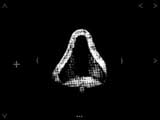
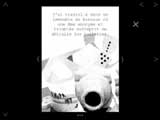
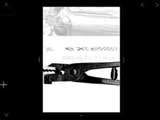
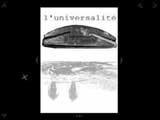
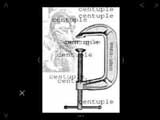
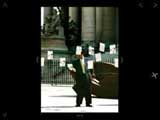
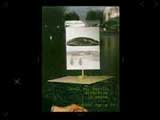
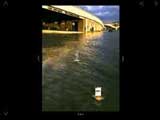
< retour
Wild Exhibition is an image exhibition focusing on the tools thematic, inspired by an old definition from the Encyclopædia Universalis.
During your visit, you will be able to discover the twelve images and excepts from the definition that are composing Wild Exibition, the same way passers by and saunterers from the streets of Paris had the chance to discover them.
The principle of Wild Exhibition is to be an exhibition without any limitation, without any localisation, (hundred localisations), but also without any support or without any multisupport.
It is in a shape of printed post cards, animated sequences on a CD-Rom, in a luminescent light on this site, and finally in a shape of a JPG file that can be downloaded and printed on this site.
This site allows you as well to exhibit or to send the post cards to somebody you choose. And so, you are carrying on with the principle of Wild Exhibition which is to be a free and aleatory exhibition.
In order to know more about this experimentation, you are welcome to get the CD-Rom on sale on this site.Enjoy your visit!
Exposition Sauvage
This
foreword is not the scafolding of a theorical precept, but is the explanation
of my path in order for me to introduce you to all the aspects of the
Wild Exhibition (with a concern for simplicity, but not for simplification).The
PC democratisation is an incontestable social mutation, which is sometimes
inescapable. It is the same for artists. They are often marginalized from
the system. I therefore purchased a computer with a similar spirit, full
of benevolent curiosity and unspeakable pressure. I thus completed the
varied ranges of my tools I had acquired along the way.
I already called the computer "a work tool " since the world
already labelled it so, and I gave it some space in my workshop. I was
ready to use it.The complex technics of my computer, his broad potential
and its immaterial information management troubled the builder craftsman
in me. Facing these issues, I then opened my Encyclopædia Universalis,
a quaint 1976 edition, and started reading the tool definition.
During my first reading, I was moved by the poetic aspect of the text.
Each word echoed as an invitation to discover more definitions. Then,
a float of images and daily events came and involuntarily jumble together.
It was just as if they wanted to verify the exactness of the ideas developped
by the definition of the tools.
A strong idea came up during the next readings: the use of the tool is
depending on the user. If the tool is a mean to transform nature, as suggested
by the definition, one has to decide about its orienttion. It was the
same for me.I started to explore the multiple and various facettes of
my computer, slowly and laboriously. As stated by the definition from
my Encyclopædia, " the mechanization way added the alienation
of knowledge to the alienation of work.". I eventually discovered
that I was using the " same tools " as the old ones used in
the past, such as a saw to cut, to glue to open or to superimpose, but
here, by using an immaterial source where the painter's repentence is
infinite and invisible.
It is the very same idea as this source " without any materiality
", without any support, paradoxally, became soon the most exciting
perspective of my tool. In fact, without the obligation to accomplish
a frustrating and degrading metamorphosis of the work, as it could be
for a painting vis à vis a photography of the same painting. It
became easy to change the presentation, the size, the definition, without
thinking that one of the version was the original, and the other was the
copy of the work. The multiplication and the diversification of the presentation
would then allow me to change the accessibility of my work, to amplify
its encounter, and the circumstances of the encounter.
So Marcel
Duchamp brought along art places a common object, his urinal, as an ironical
emissary from the outsideworld. Since he presented it lying, he tried
to change people from the art world's point of view, in order for them
to focalize on the world. So Robert Fillou stated that " art is what
makes life more interesting than art ", it was still true that the
existence of an " original " work of art would not allow a printout.
With this new tool, I had no more reason to regard art places as the exclusive
element of encounter and existence of my work.
This is when the concept of Wild Exhibition took place. It was a crossing
point, and a meeting point of various interests, including everything
uncertain involved in a meeting.
.../...
Exposition Sauvage
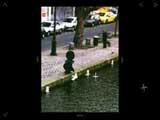

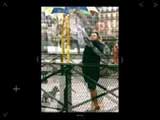
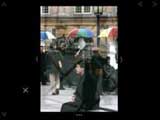
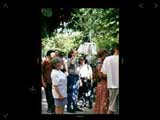
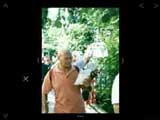
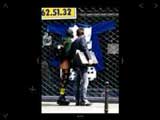
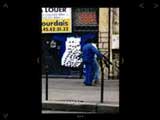
< back